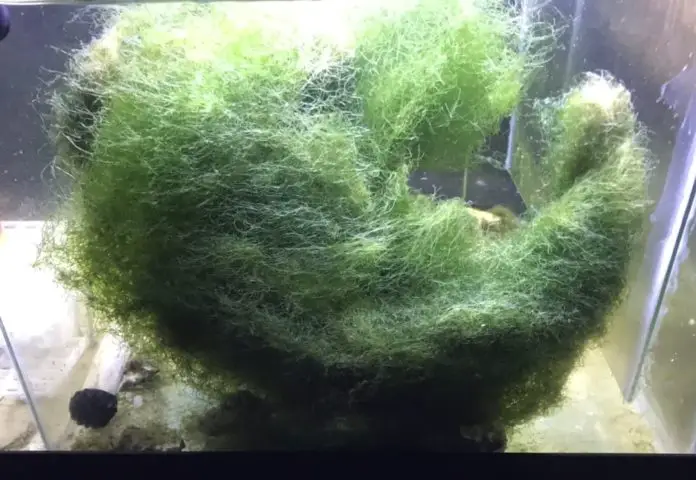A common algae that reef aquarists use is the interesting green macroalgae Chaeto, however, like all living organisms, the Chaeto presents its own unique challenges, and can be temperamental regarding certain conditions in its surrounding environment – or lack thereof.
One common issue for the Chaeto macroalgae is it turning white. Just like in the wild, reefs around the globe, the Chaeto macroalgae can turn white if its requirements for water and lighting conditions aren’t adhered to.
Chaeto requirements:
- Specific Gravity: 1.024 – 1.025 at 78 – 80F
- Magnesium: 1350 – 1450 ppm
- Calcium: 380 – 480 ppm
- Potassium: 380 – 420 ppm
- Alkalinity: 8.5 – 9.5 dkh
- Boron: 5 – 6 ppm
- Iodine: .06 – .12 ppm
- PO4: .03 – .07ppm
Why Chaeto’s Turn White
Lack of nutrients
If your tank doesn’t have enough nutrients to maintain a healthy Chaeto, the Chaeto is being starved.
Water flow
Chaeto’s need to be provided with sufficient flow through the reactor with a strong pump. You should record the flow by timing how long it takes for the outflow to fill a known volume.
If the Chaeto is turning white on only one side. This could be happening because of a lack of water movement.
Don’t have the reactor draw water from a refugium with macroalgae, as this will compete with Chaeto in a reactor.
Lighting
A Chaeto could be turning white caused by lighting. You may need to check that the light settings are correct. Remember that Chaetos need plenty of light to thrive. If you believe that this is the case, try flipping the Chaeto over so that all of its parts get enough light.
The Chaeto needs at least 8 hours of darkness, so run your reactor’s LEDs for no more than 16 hours. Run a reverse daylight cycle to keep your water pH level stable 24/7.
When acclimating a Chaeto to intense LEDs, slowly start ramping up the light cycle over a week.
Although light is important for Chaetos, they also need at least 8 hours of darkness to maintain good health.
If you’ve had the tank’s light sleeves for a year or more, you should replace them with new ones. It’s important because, after a certain period, light sleeves don’t perform well or maintain the intensity of LEDs due to scratches and ageing.
Nitrate levels
Nitrate is the main nutrient needed to maintain a healthy Chaeto and a nitrate If the nitrate levels become too low you may need to add a supplement.
If the Chaeto is in the reactor, you need to keep an eye on the nitrate level, as nitrate is one of the core sources for maintaining a healthy Chaeto.
Phosphate levels
Phosphate is very important for Chaetos. In some cases, it may be necessary to dose phosphate to maintain the recommended ratio between NO3 and PO4. Don’t let phosphate drop below 0.02 ppm (the ideal range is 0.03 – 0.07 ppm).
Magnesium
High magnesium isn’t good for Chaeto, as it can interfere with the functions of calcium, a key element for plant growth and production. High magnesium can also affect the uptake of potassium, which is another important element for maintaining a Chaeto.
magnesium suppresses potassium uptake. It also interferes with calcium functions. The highest magnesium level shouldn’t exceed 1500 ppm to ensure the rapid growth of Chaeto.
Boron And Iron
Boron and iron are also important for Chaetos. A supplement may be needed to raise iron.
Reactor
keeping a Chaeto in an algae reactor will be more favorable for the Chaeto compared to keeping it anywhere else. An algae reactor also helps to bring a balance to the water’s pH level, increases the amount of dissolved oxygen, and takes up excess carbon dioxide from the water.
Biopellets
You should avoid using Biopellets as Biopellets have an effect that lowers the nitrates, which is an essential element for Chaetos.
Other
Make sure that the alkalinity level is within 9.5 dKH.
The minimum level of iodine should be .06 ppm and the maximum level can be up to .12 ppm.
Helping A Cheato Recover
There are aquarists that recommend adding a low dose of iron supplement to the tank which is believed to help a Chaeto recover.
